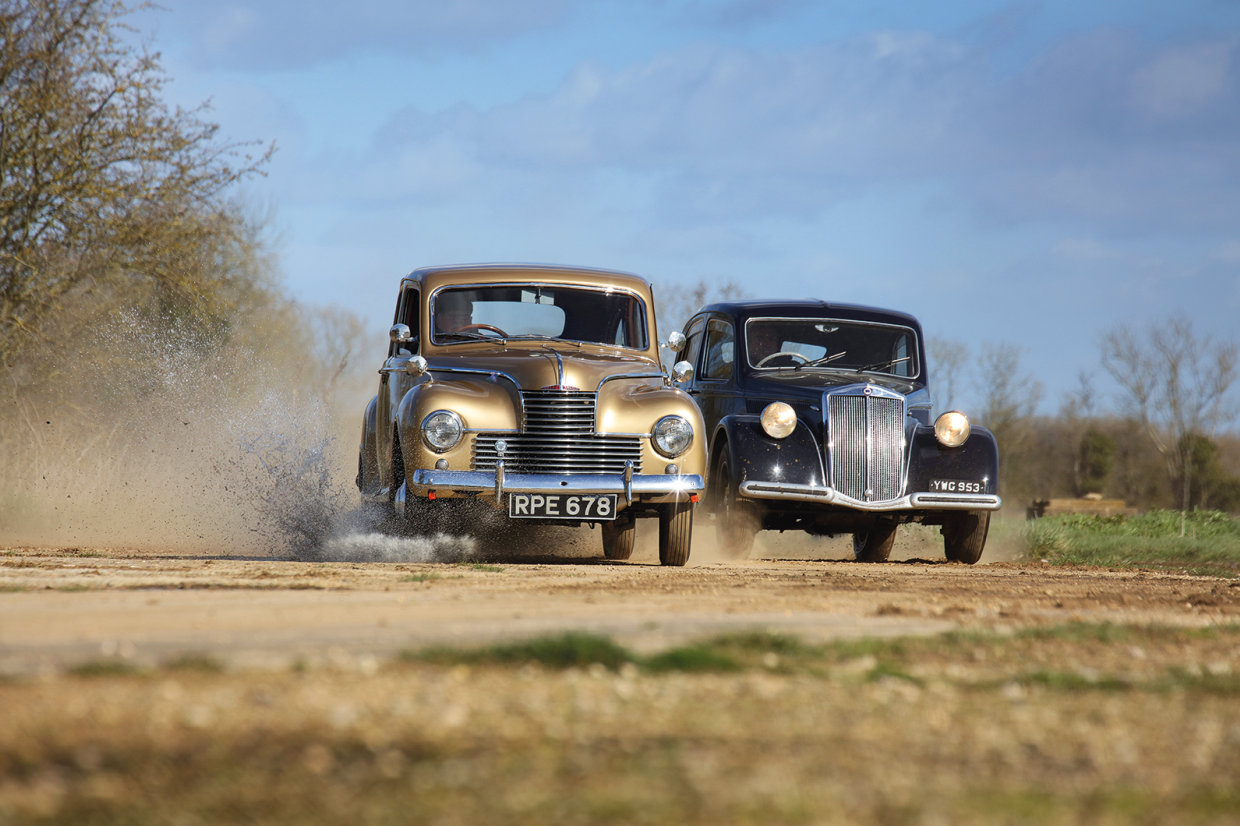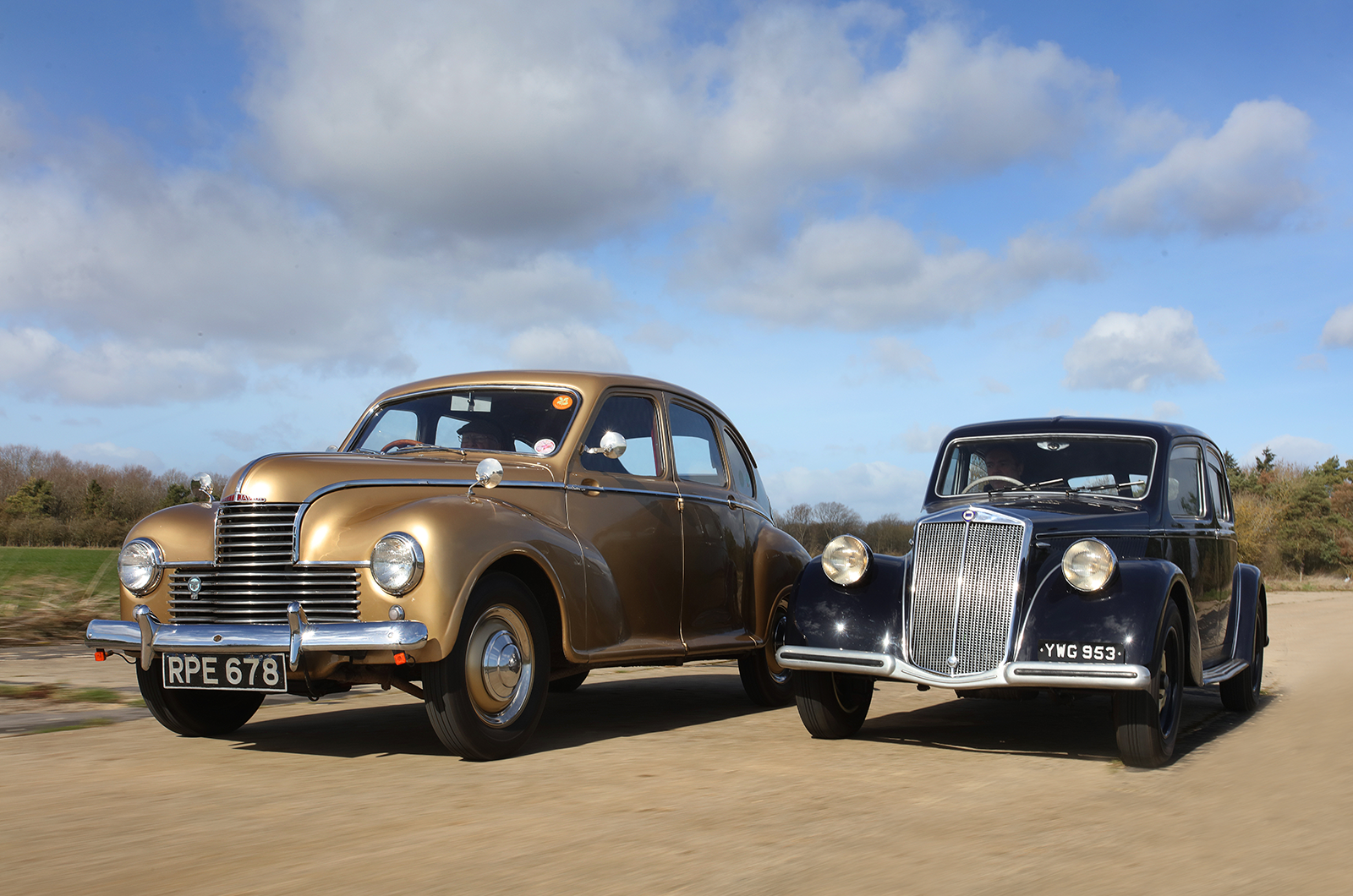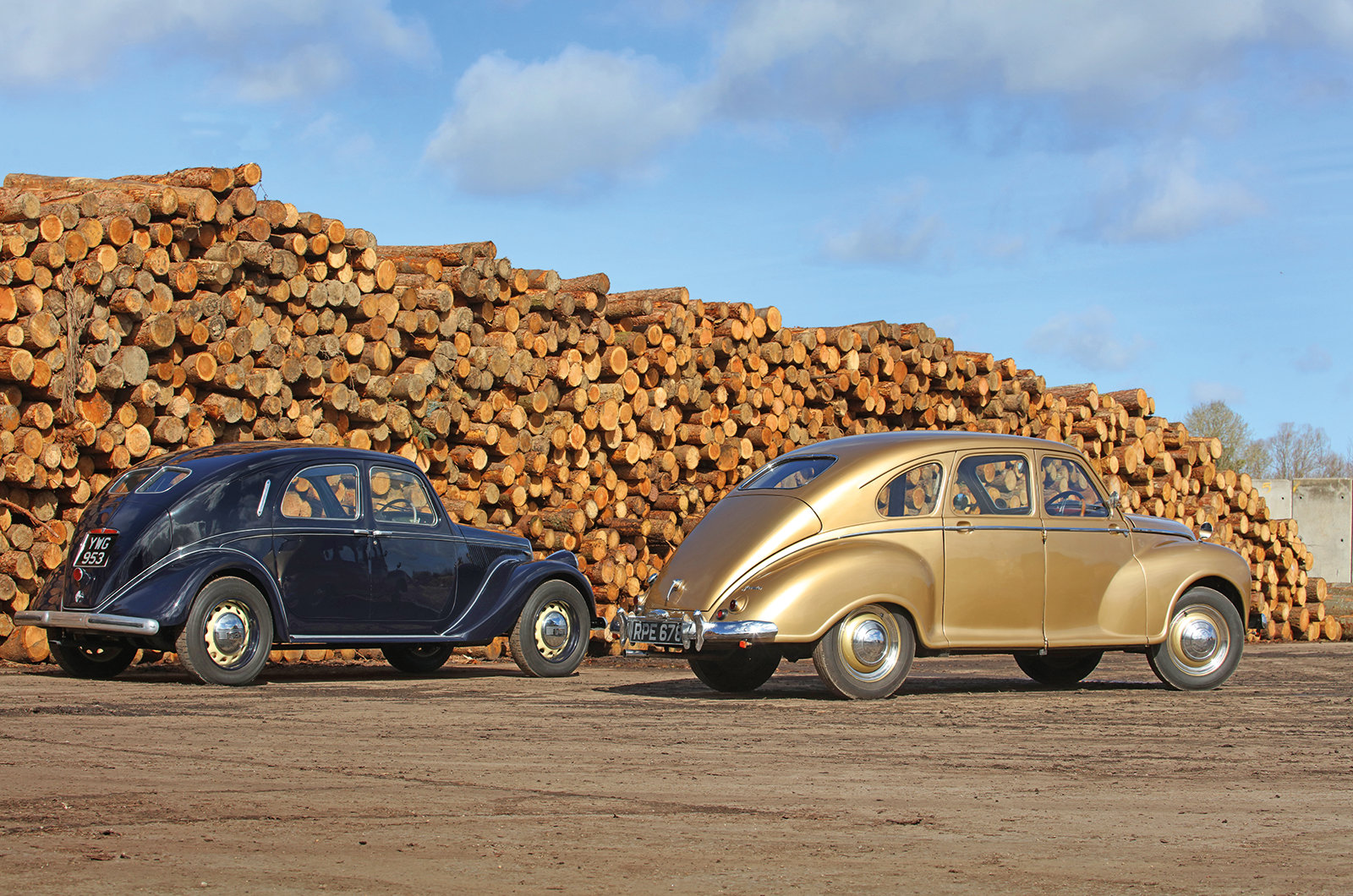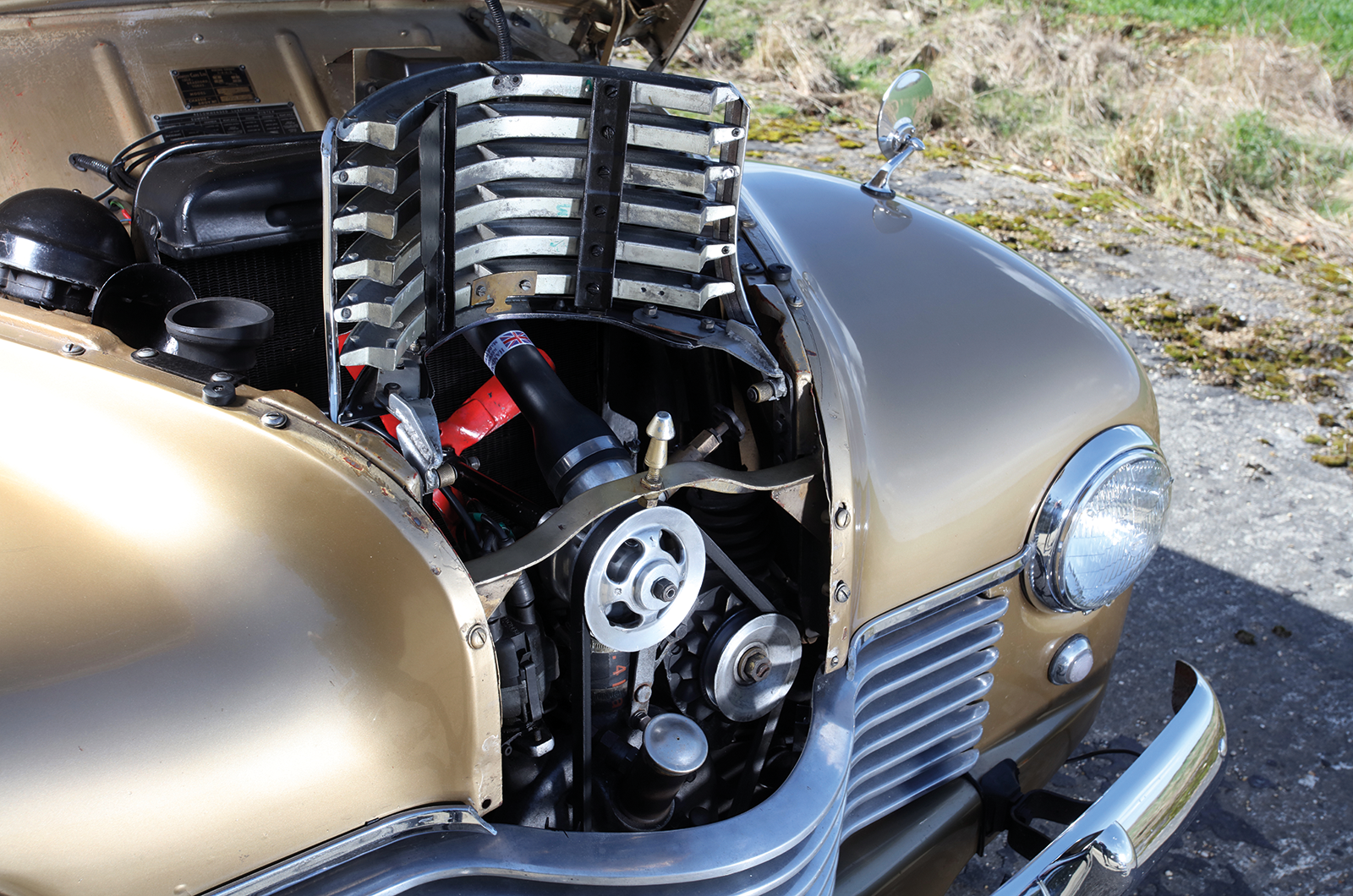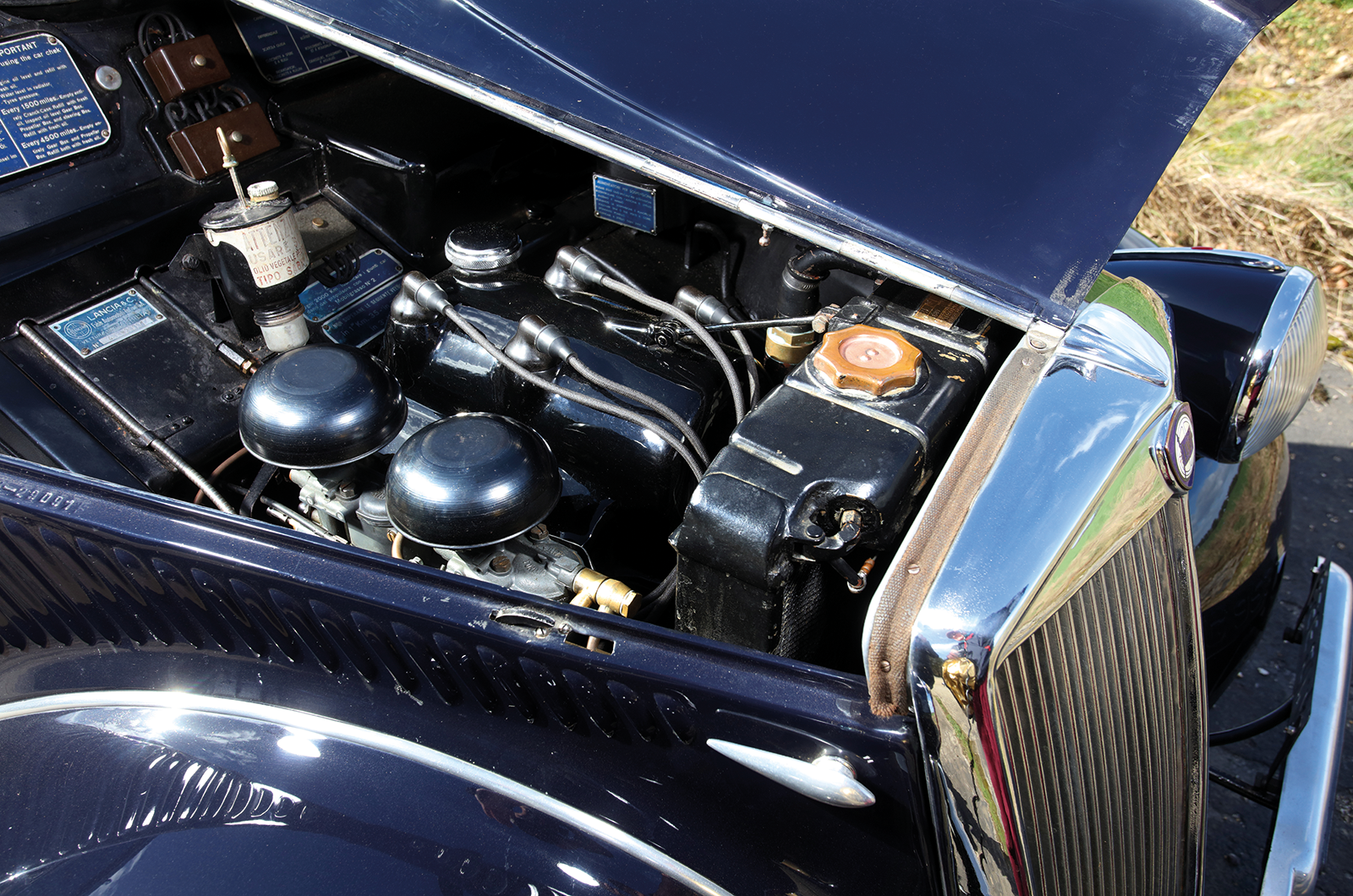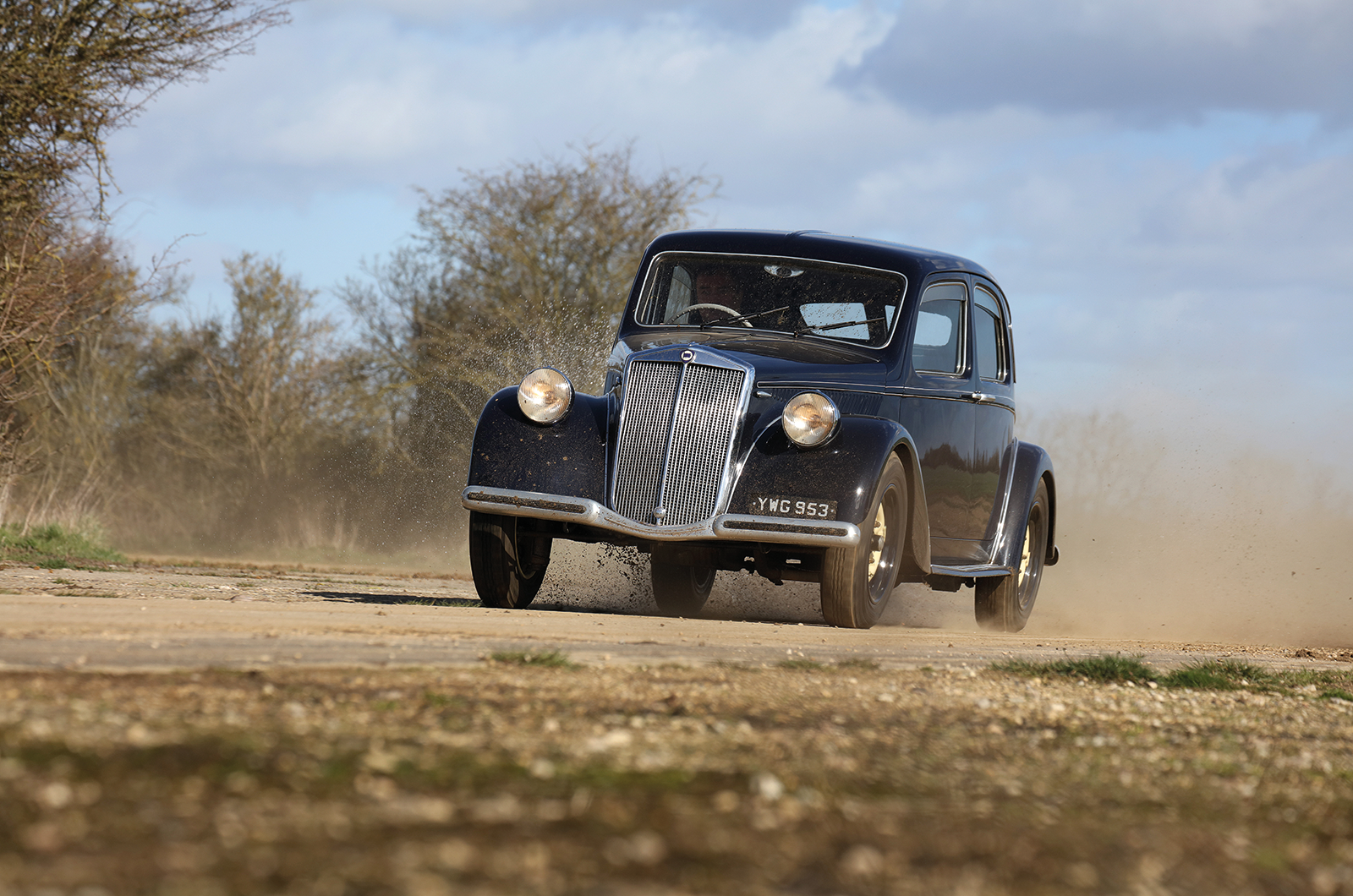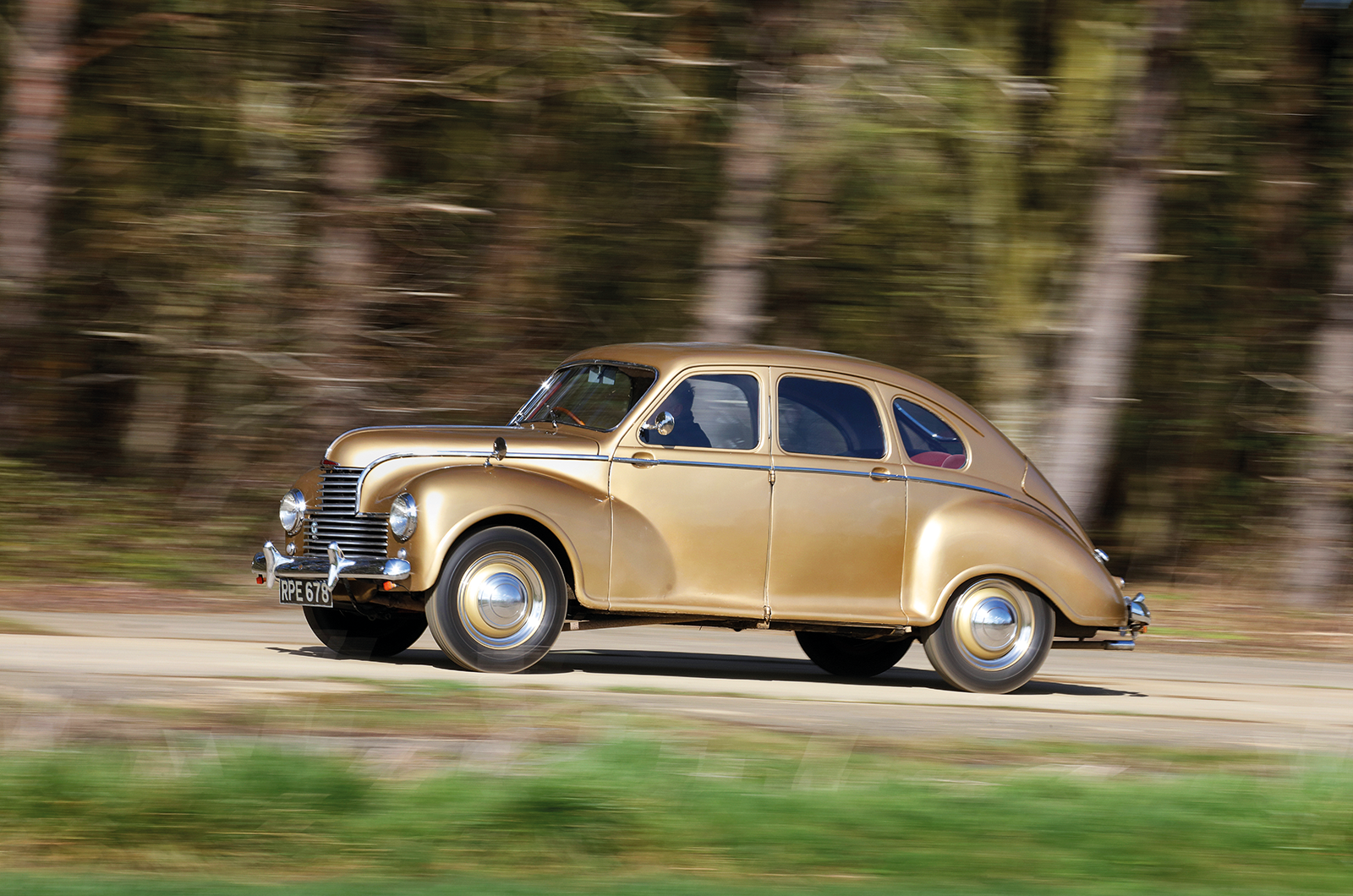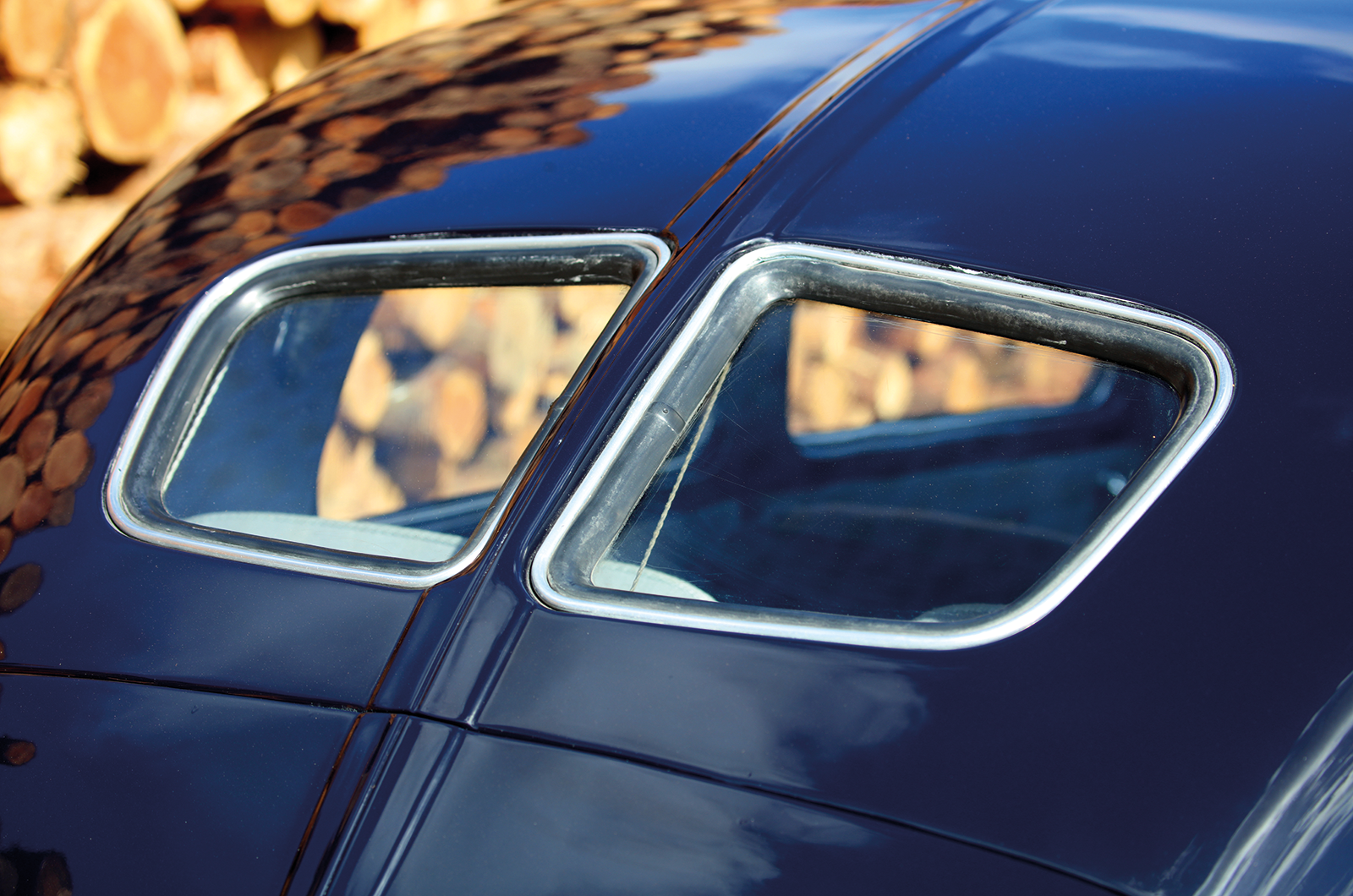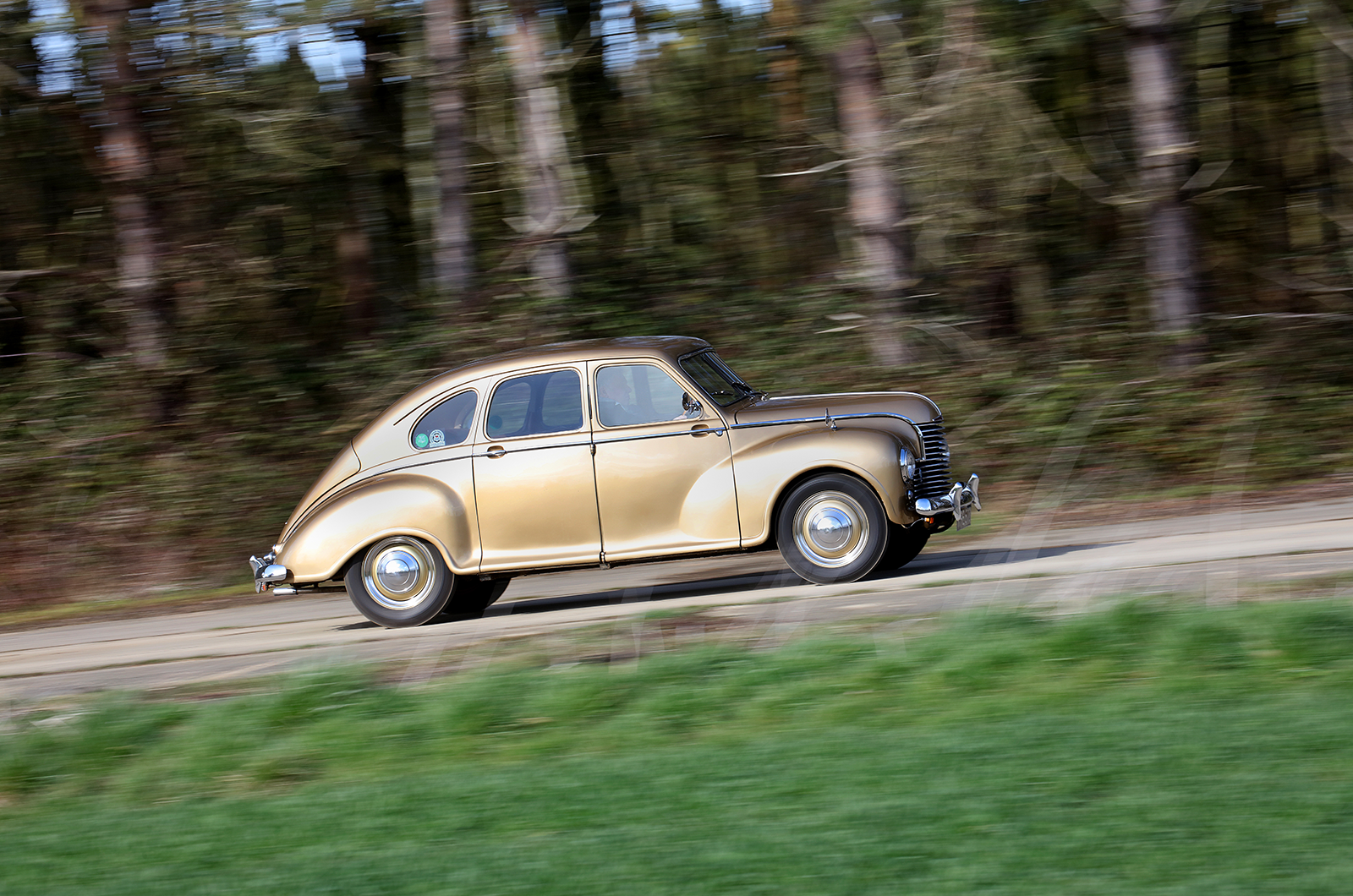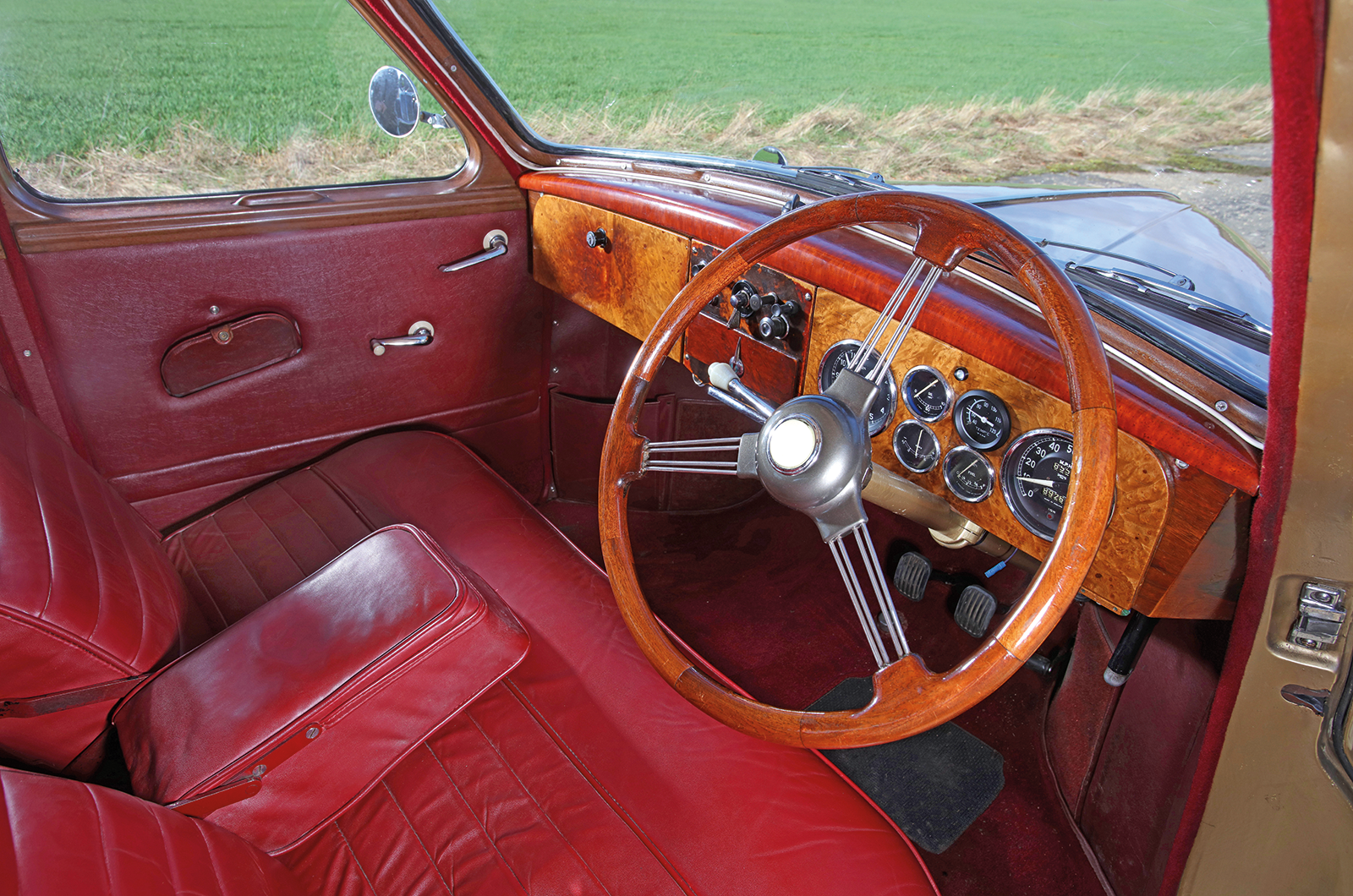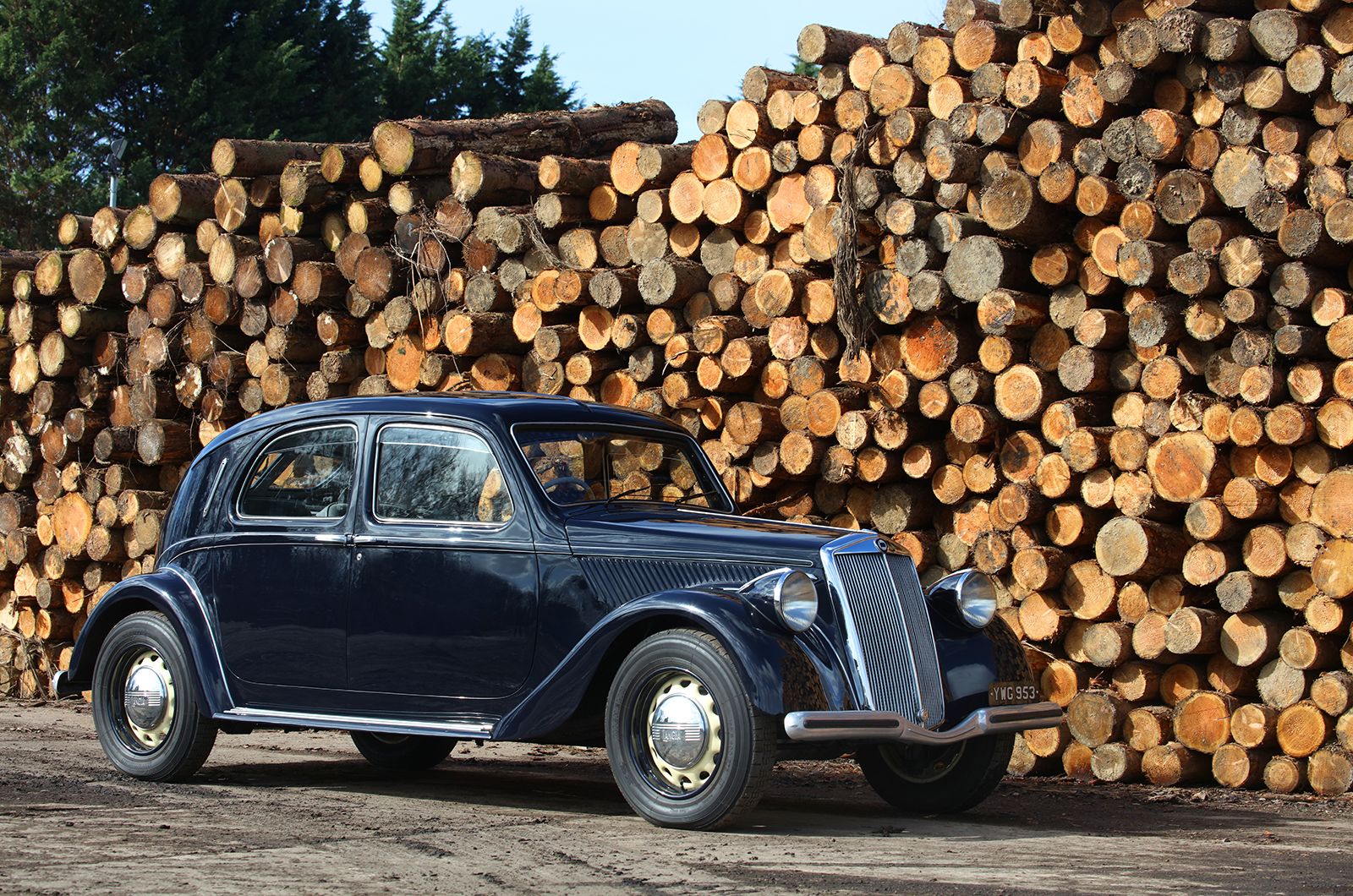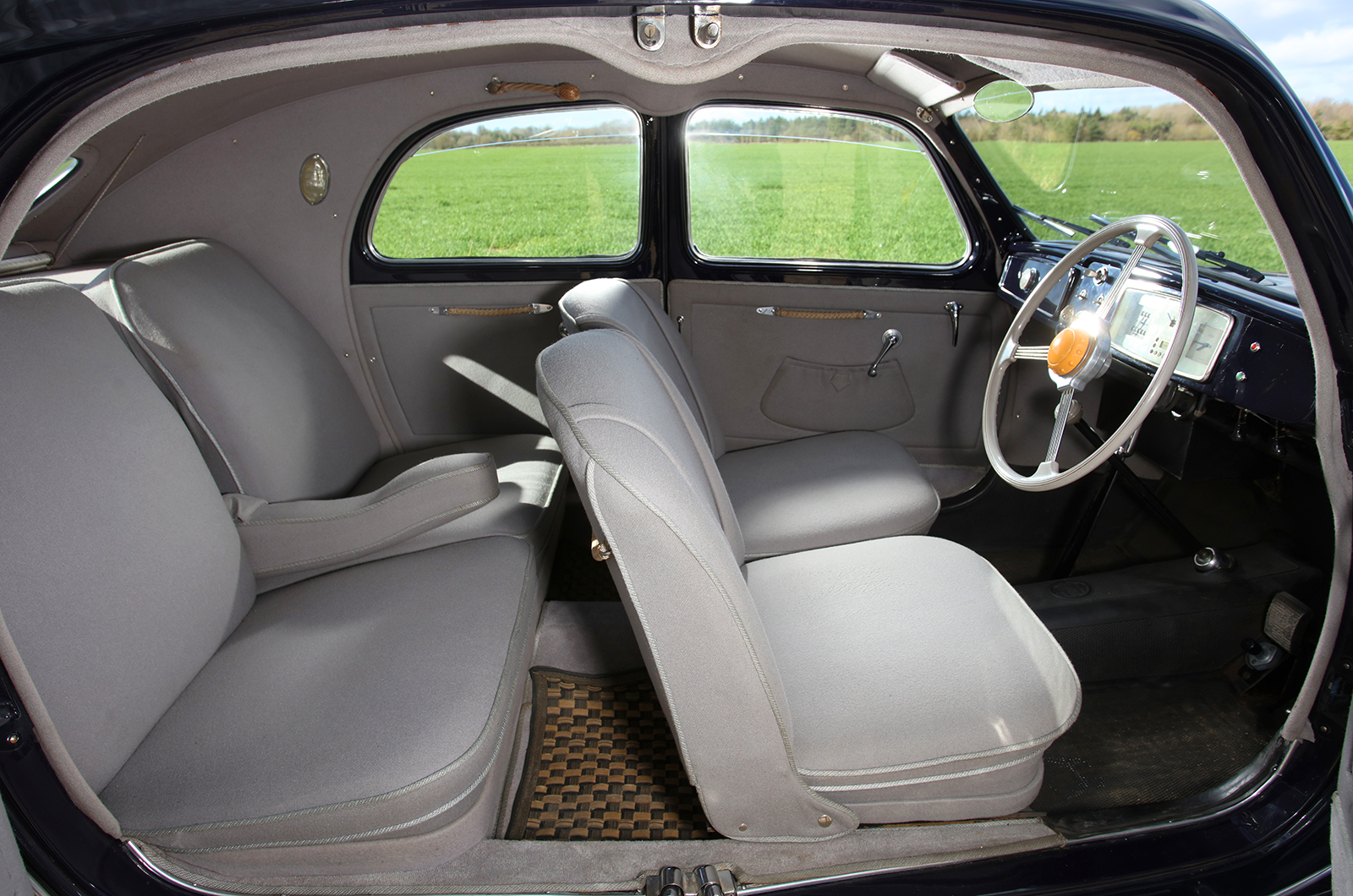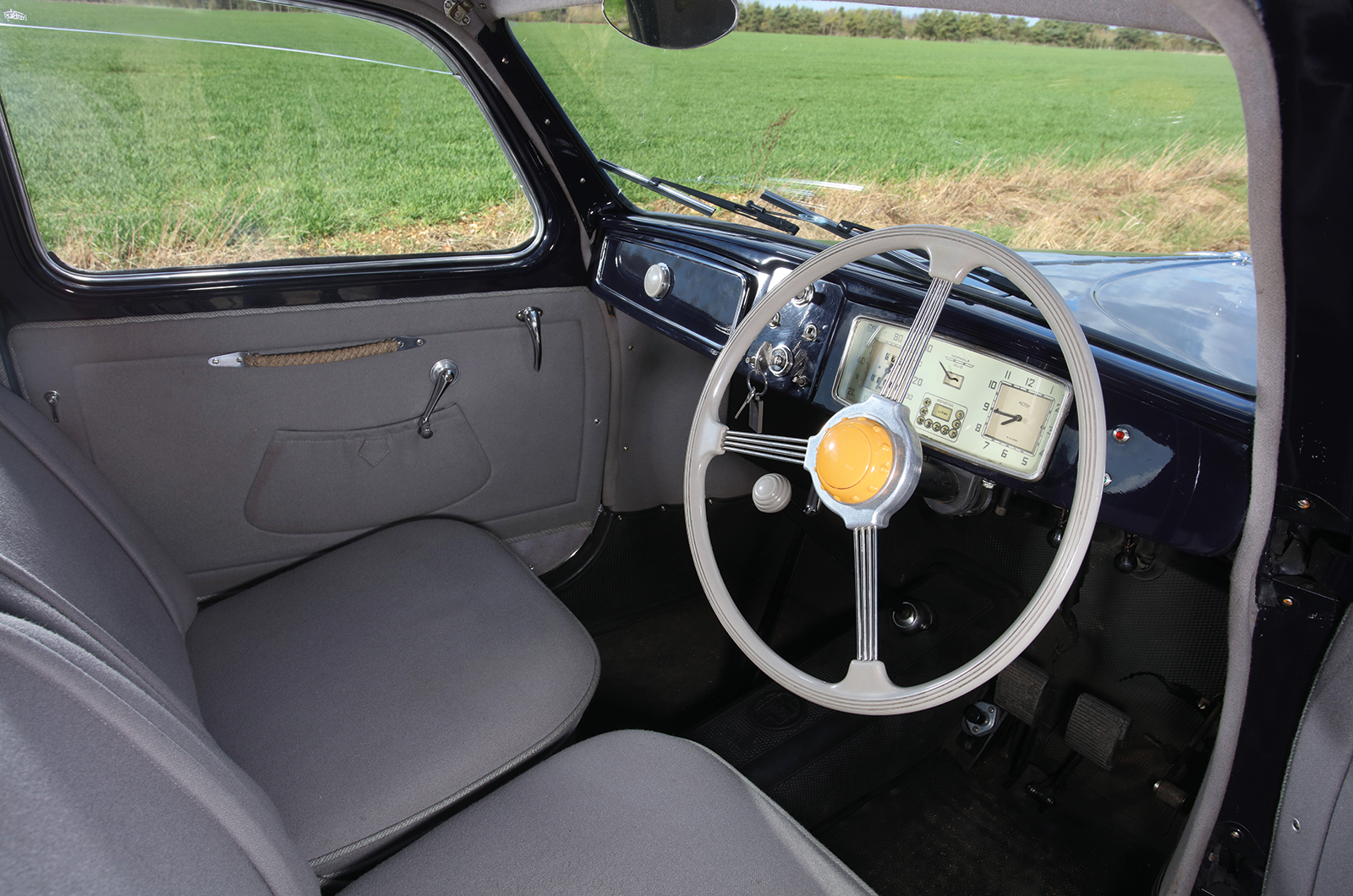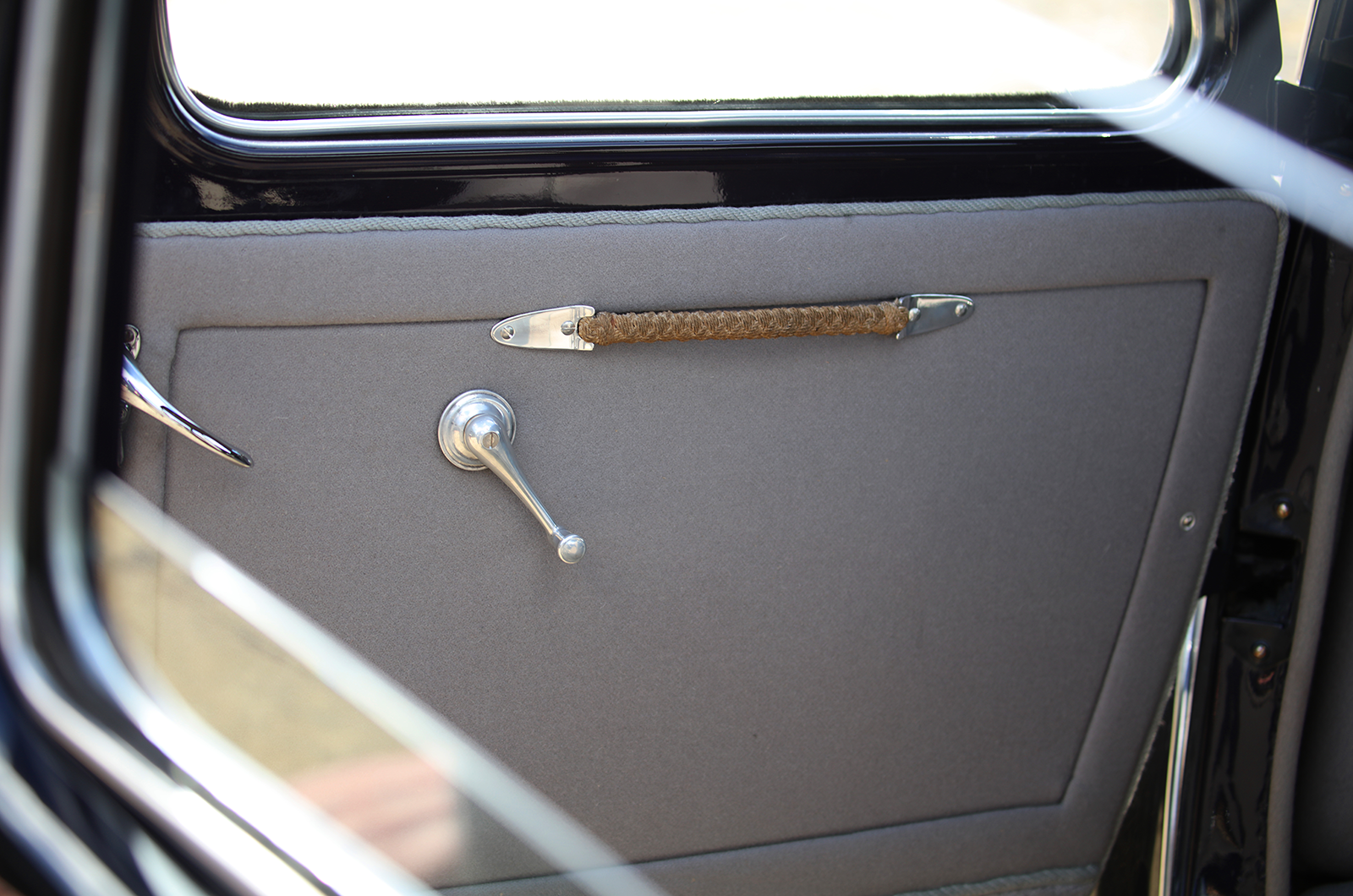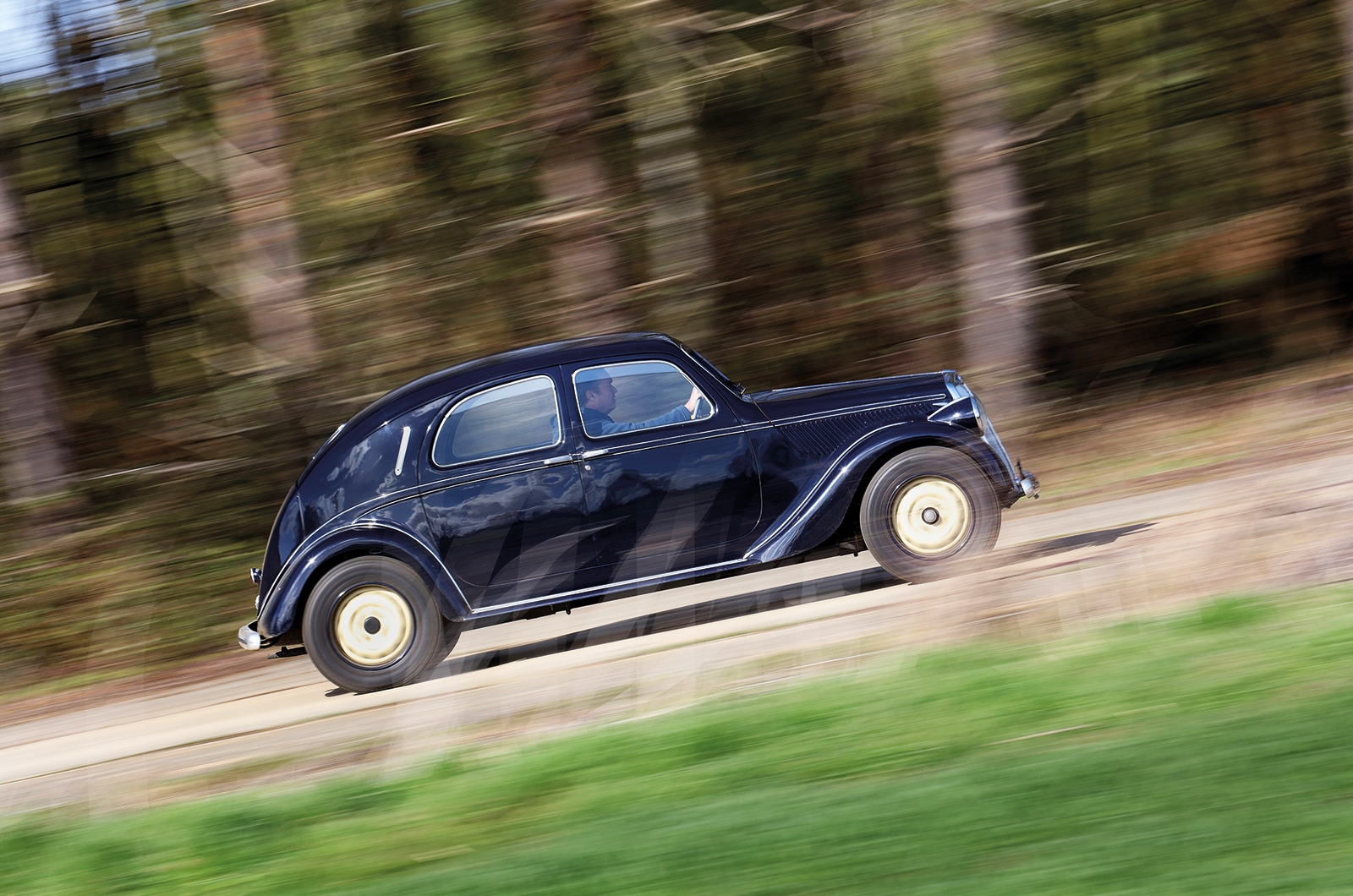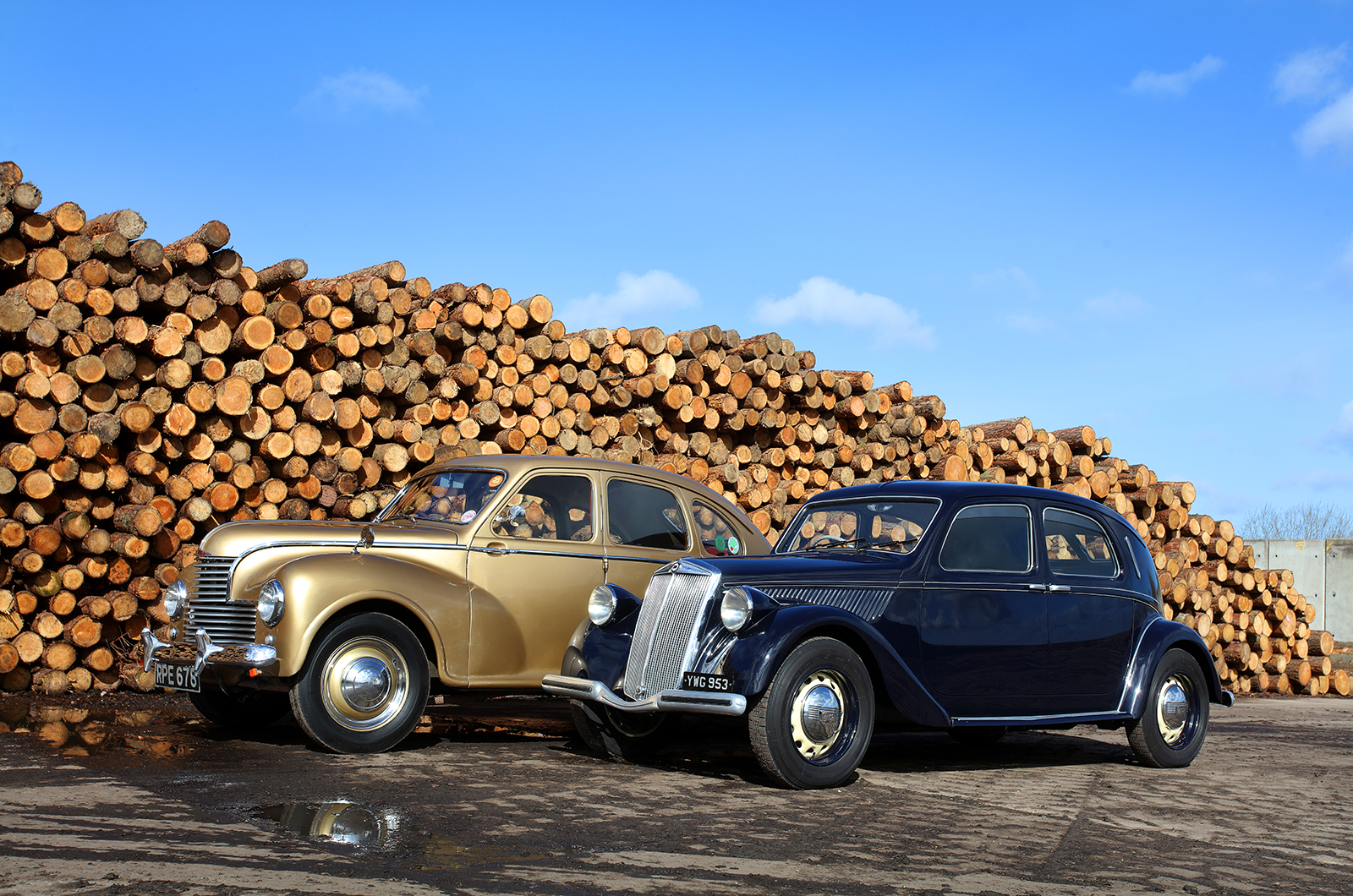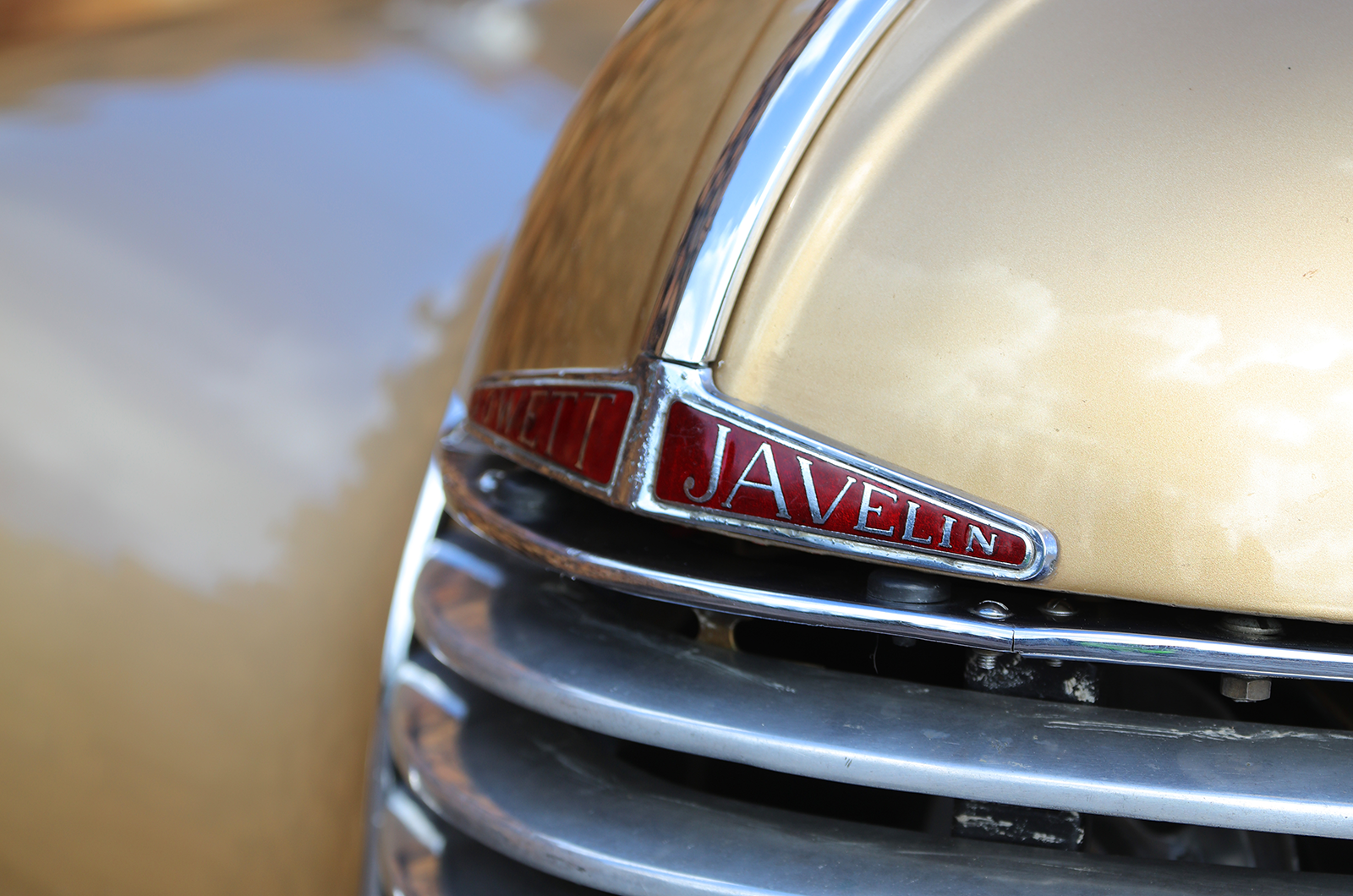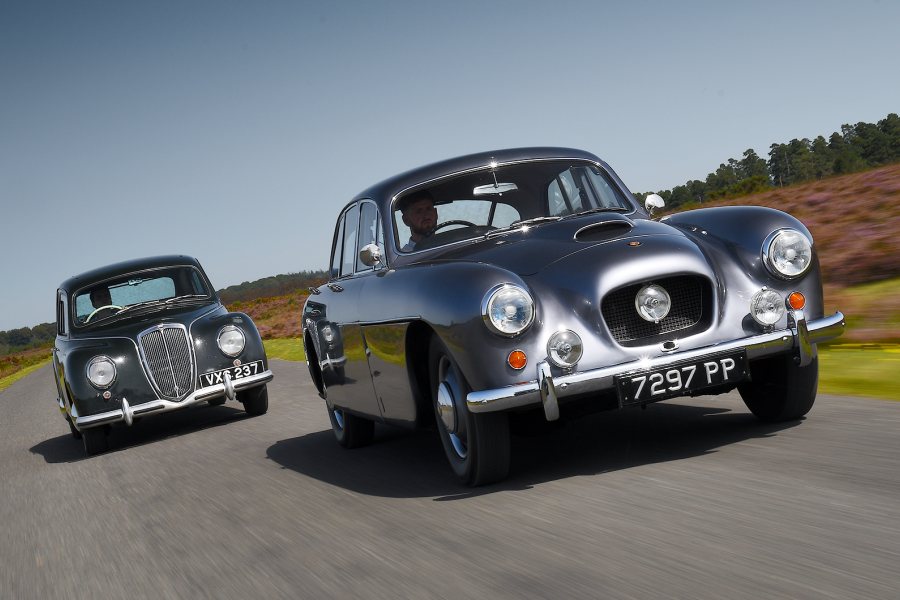The beautiful gold-on-cream instruments could be from a watchmaker’s bench, and the speedo runs around to 150kph.
Inside the Aprilia’s spartan but high-quality cabin
There is a chemical smell inside the car that is typically Lancia, perhaps emanating from the equally typical rubber floor mats.
The delicacy of the oval rear-view mirror and the bourgeois pretensions of the braided door-pulls are at odds with the manly floor-hinged pedals, the long, chunky gearlever in its floor-mounted balljoint and the massive handbrake; all reminders that Lancia made its real money building trucks.
To start, you press the ‘key’ – really a small metal stick – into the barrel, turn for ignition, then pull a lever under the dash to engage the starter.
The V4 has a more assertive staccato beat than the Jowett’s boxer. It’s more responsive and makes throatier noises, but asks that you use the gears and rev it harder to extract performance that is roughly on a par with the English car.
So modern is the compact Aprilia’s streamlined shape, it’s hard to believe that this elegant little Lancia saloon is actually a pre-WW2 design
This is no chore because the ’box is a delight, superbly quick once you have ascended to the hit-and-miss art of double-declutching coming down the ratios with those short, light movements.
When most ordinary cars struggled to top 50mph, you could do 60 in the Aprilia’s ‘silent’ constant-mesh third with another ratio and 20mph to come.
You work a little harder for the performance, but the Lancia has margins of cornering power on its narrow tyres that still impress.
Its light, direct steering, its restrained body roll and its ability to take bad surfaces in its stride set new dynamic standards that even the brave and accomplished Jowett struggled to approach a decade later.
Align yourself with the expectations of the 1930s and ’40s and you can see why this tautly suspended yet comfortable little saloon won so many friends, not so much for its outright speed but for the way that speed could be maintained on any type of road.
A forward-focused pair
Both true sports saloons, these cars are complete designs in as much as they had their genesis in the single thought process of an individual, rather than being cynical parts-bin products designed by committee.
That the Javelin got so close to the Lancia in so many areas says a lot for Jowett and the creative ingenuity of its designer.
Later, he was ignominiously booted out of BMC to make way for Alec Issigonis; I can’t help thinking Palmer’s more considered, less impetuous approach might have resulted in cars that made profits rather than headlines.
He ended his working life at GM, quite satisfied with his achievements. The Javelin was his finest hour and, while it doesn’t have the cachet of the Lancia, neither does it have the price-tag: our admittedly beautiful Aprilia was insured for seven times the value of the Jowett.
Images: James Mann
Thanks to Jowett Car Club; Thornley Kelham
Factfiles
Lancia Aprilia Lusso
- Sold/number built 1936-’49/27,642
- Construction steel monocoque
- Engine alloy-block, iron-head, ohc 1352cc V4, Zenith 32/VIM or 36VI-2 carburettor
- Max power 48bhp @ 4300rpm
- Max torque 57Ib ft @ 2000rpm
- Transmission four-speed manual, RWD
- Suspension independent, at front by sliding pillars rear trailing arms, torsion bars, transverse semi-elliptic leaf spring
- Steering worm and sector
- Brakes hydraulic drums, inboard at rear
- Length 13ft 7½in (4153mm)
- Width 4ft 10in (1473mm)
- Height 4ft 9½in (1460mm)
- Wheelbase 9ft ¼in (2750mm)
- Weight 1904Ib (864kg)
- 0-60mph 25 secs
- Top speed 80mph
- Mpg 28-32
- Price new £355
- Price now £10-55,000*
Jowett Javelin
- Sold/number built 1947-’53/23,307
- Construction steel semi-monocoque
- Engine alloy-crankcase, iron-head, wet-liner ohv 1486cc flat-four, with twin Zenith 30VM4 or 30VM5 carburettors
- Max power 50bhp @ 4100rpm-52½bhp @ 4500rpm
- Max torque 76lb ft @ 2600rpm
- Transmission four-speed manual, RWD
- Suspension: front independent, by double wishbones rear live axle, four trailing links, Panhard rod; torsion bars, telescopics f/r
- Steering rack and pinion
- Brakes hydromechanical drums (full hydraulic from 1950)
- Length 14ft (4267mm)
- Width 5ft 1in (1549mm)
- Height 5ft 1in (1549mm)
- Wheelbase 8ft 6in (2591mm)
- Weight 2380lb (1082kg)
- 0-60mph 22.2-20.9 secs
- Top speed 77.6-82.4mph
- Mpg 27-35
- Price new £1129/1261 (standard/de Luxe)
- Price now £5-£14,000*
*Prices correct at date of original publication
READ MORE
Chrysler Airflow vs Volvo Carioca: Streamlined sensations
Buyer’s guide: Jowett Javelin
The sole surviving Lancia D23
Martin Buckley
Senior Contributor, Classic & Sports Car
